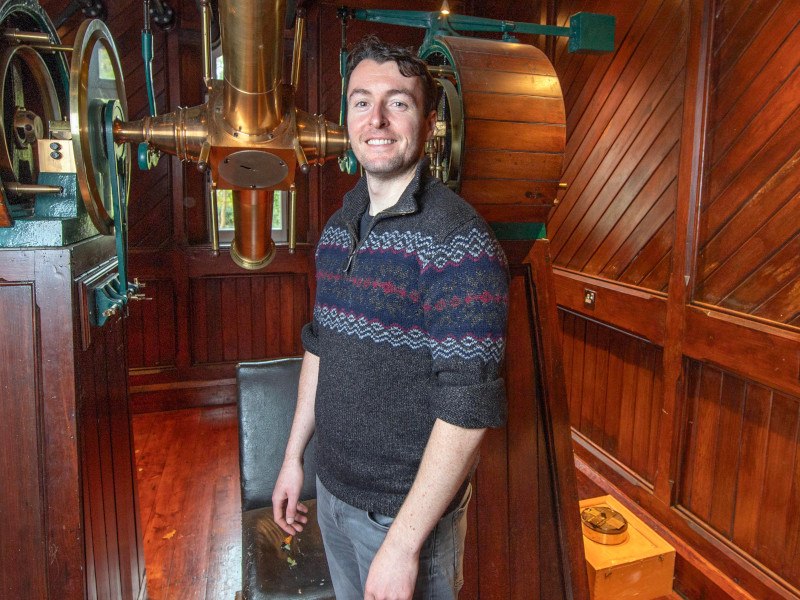
Irish astronomer Dr Mark Kennedy used a telescope based in Chile to spot a kilonova, which is stronger than a supernova, from his Cork home.
A group of international scientists, which includes Irishman Dr Mark Kennedy, has uncovered new information about the creation of elements in space. Their work could answer questions about how the Earth was formed.
Kennedy is an astronomer based at University College Cork’s School of Physics. He is a co-author of a paper based on the findings that was published in the academic journal Nature today, (25 October). The team of scientists used the James Webb Space Telescope (JWST) and other NASA telescopes to observe an event that led to the creation of heavy elements that played a key role in the Earth’s formation.
The event captured by the scientists on the telescopes was a bright gamma-ray burst, GRB 230307A. This big explosion triggered a kilonova and it marks one of the first times such footage was observed by scientists using the JWST. Kilonovas occur when two neutron stars collide or when a neutron star collides with a black hole. They release massive amounts of energy which leads to the creation of heavy elements such as tellurium and iodine. The scientists believe that these elements are present in the ejected material that is now floating around in the aftermath of the explosion.
From Chile to Cork to kilanovas
Kennedy’s involvement with the project saw him gather data from the kilonova using the European Southern Observatory’s New Technology Telescope. Although the telescope is based in Chile, Kennedy was able to use it remotely from his home in Co Cork. The data he gathered led to the discovery of the optical counterpart to the kilonova.
“Not every gamma-ray burst produces an explosion that we can study with JWST, and the light from those that do can fade very rapidly,” he said, explaining the significance of the footage. He pointed out that the discovery was a combination effort from NASA’s Fermi Gamma-ray Space Telescope and scientists like him pointing their telescopes at where they thought the explosion might occur. “This explosion occurred in the very southern part of the night sky, making it impossible to observe with most of our ground-based facilities.”
“Fortunately, I was observing with a telescope in Chile – remotely from my dining room in Cork – several hours after the explosion reached us here on Earth, and found a new object had appeared in the night sky right where the burst had come from.”
Kennedy said that “excitement rippled out through the astronomical community” as scientists realised they might be witnessing a kilonova. In the following weeks after the footage was observed, the group submitted proposals to use JWST to study the event for the first time. The results spoke for themselves, Kennedy said.
The lead author of the study, Andrew Levan of Radboud University in the Netherlands and the University of Warwick in the UK, said the team was “now finally in the position to start filling in those last blanks of understanding where everything was made, thanks to Webb.”
JWST has been used by a lot of astronomers to unlock the secrets of space and how it was formed.
10 things you need to know direct to your inbox every weekday. Sign up for the Daily Brief, Silicon Republic’s digest of essential sci-tech news.

